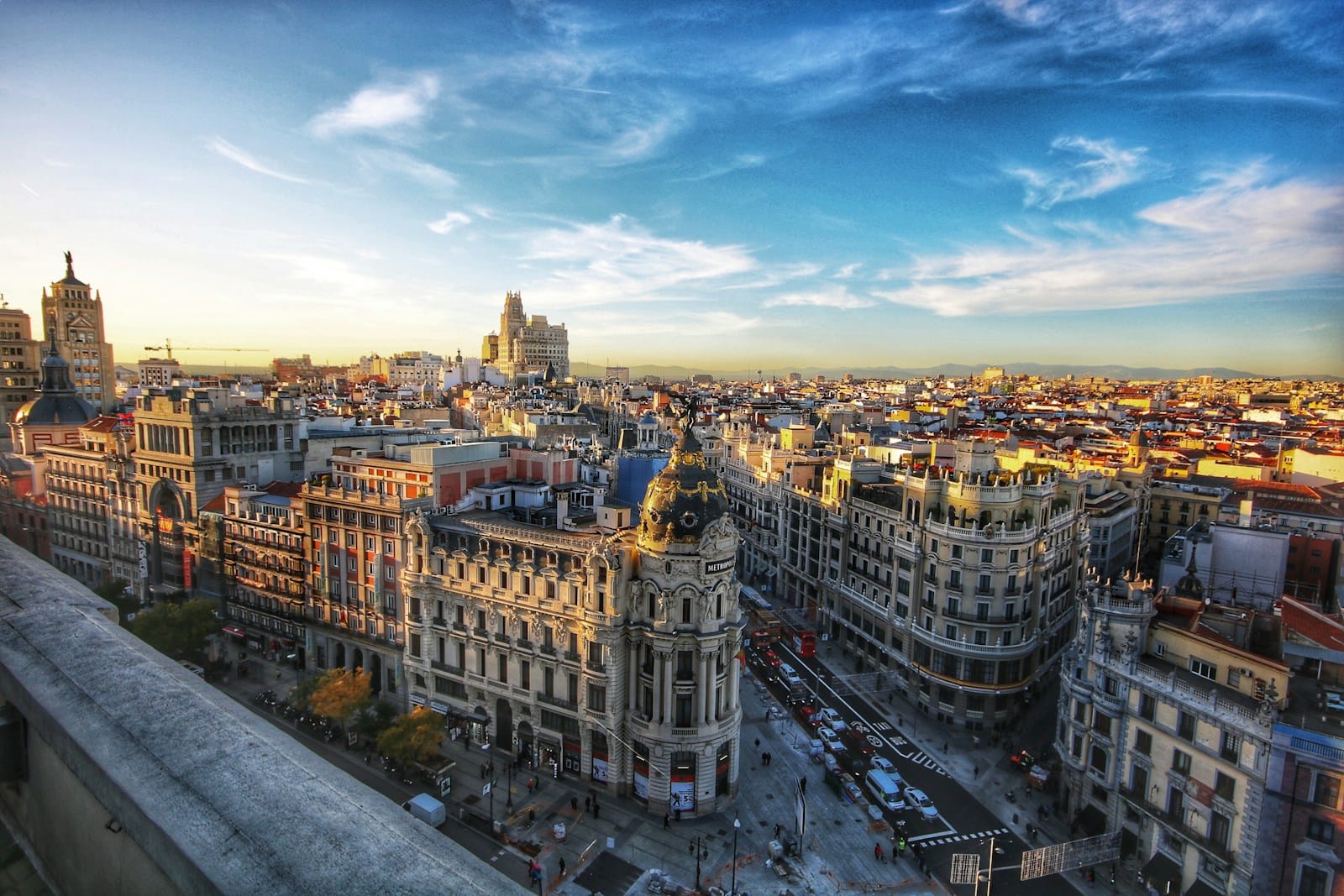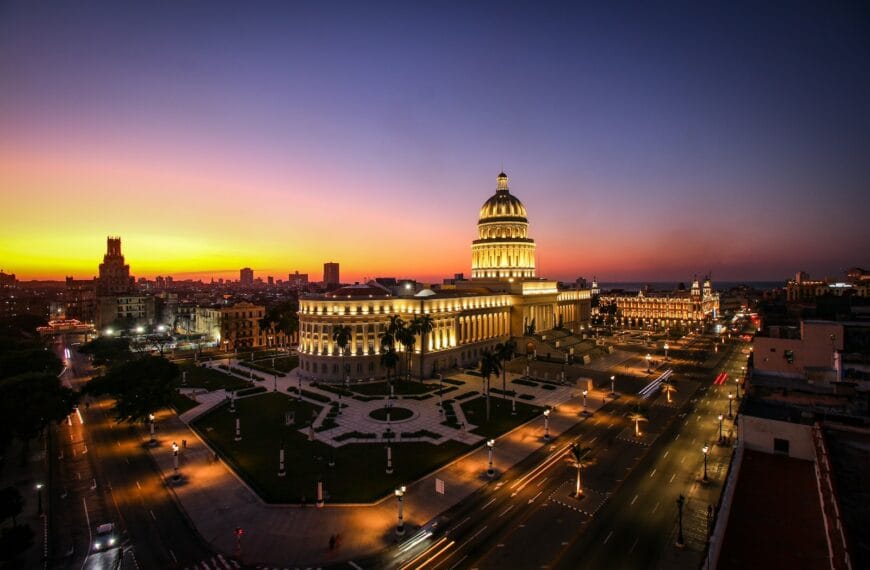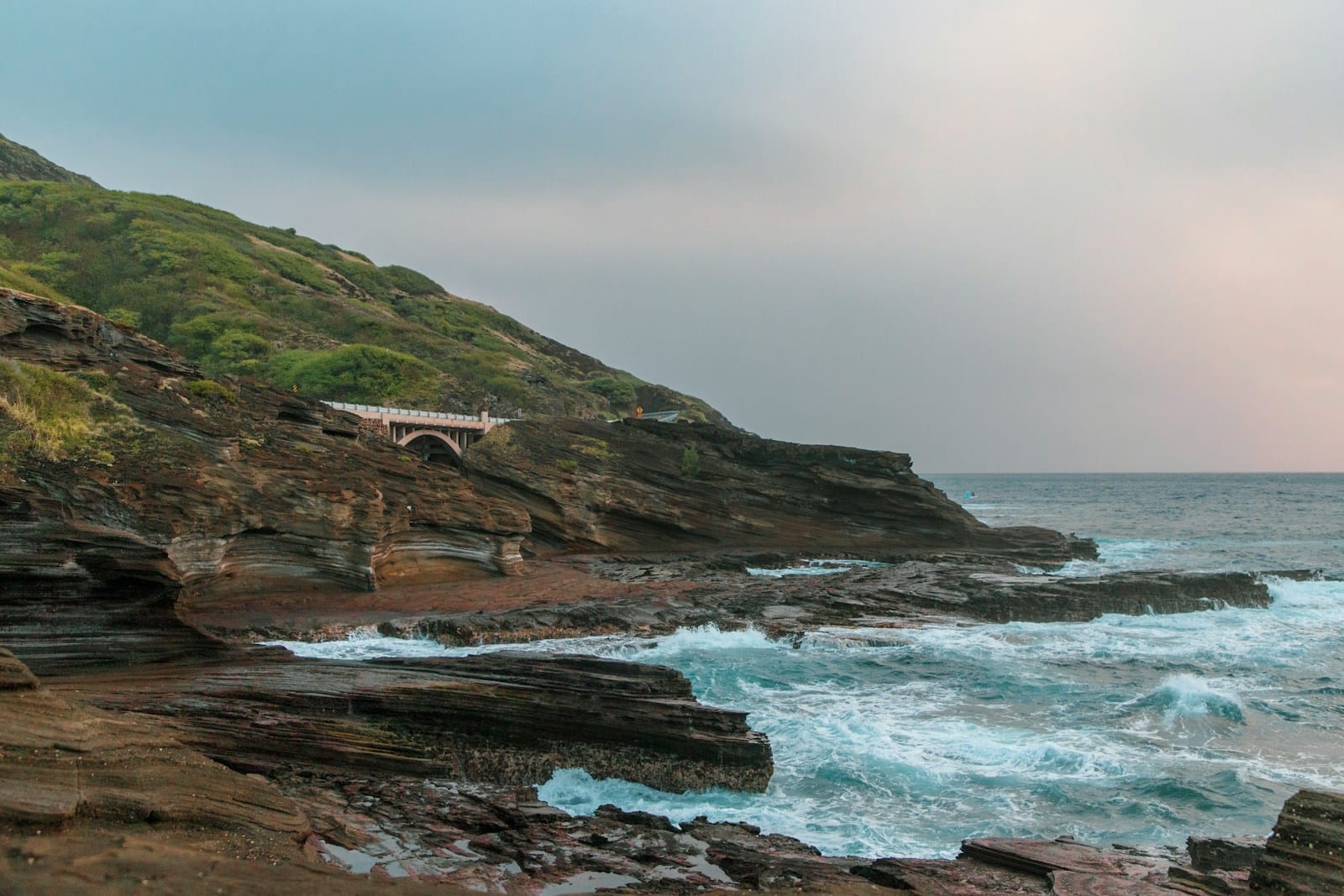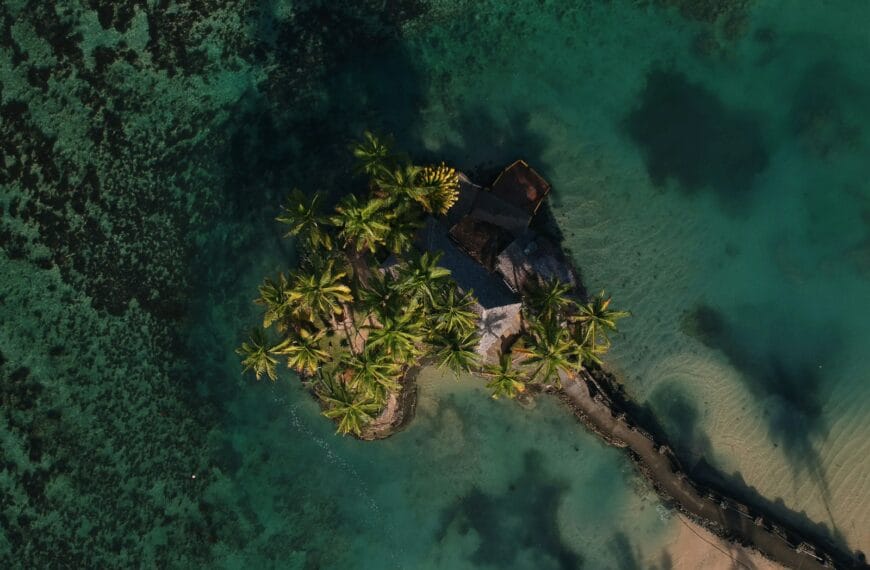Spain Travel Guide: Passion, Flavor & Timeless Cities
Intro to Spain Travel Guide
From the fiery rhythms of flamenco to the quiet charm of Andalusian patios, Spain captures both the heart and the senses. This Spain travel guide takes you from snow-capped Pyrenees peaks to the Moorish arches of Granada, from Gaudí’s dreamlike creations in Barcelona to the sun-bleached Balearic Islands. Travelers come for art, cuisine, and sunshine—but stay for the life that unfolds between siestas and midnight tapas.
For a seamless trip, start planning your journey with our complete Spain tour guide — featuring regional highlights, must-see destinations, expert tips, and itinerary ideas across this endlessly captivating country.
Exploring Spain
Andalusia | Aragon | Asturias | Balearic Islands | Basque Country | Canary Islands | Cantabria | Castile and León | Castile-La Mancha | Catalonia | Extremadura | Galicia | La Rioja | Madrid | Murcia | Navarre | Valencia
💡Quick Facts:
Continent: Europe
Capital: Madrid
Area: 505,370 km² / 195,124 mi² (Instituto Geográfico Nacional)
Population: ≈ 49.3 million (INE estimate, July 2025) (ine.es)
Population Density: ≈ 97 people per km² (2025 est.)
Official Language: Spanish (Castilian); co-official languages include Catalan/Valencian, Galician, Basque (boe.es)
Currency: Euro (EUR, €) (ecb.europa.eu)
Time Zones: Mainland CET (UTC +1 / +2 DST); Canary Islands WET (UTC 0 / +1 DST) (mptfp.gob.es)
Major Airports: Madrid-Barajas ( MAD ) – Barcelona-El Prat ( BCN ); Málaga ( AGP ); Palma de Mallorca ( PMI ).
Climate Summary: Mediterranean along coasts; continental in interior; oceanic in north; semi-arid in southeast.
Known For: UNESCO World Heritage sites (50+), tapas culture, architectural heritage (Gaudí, Moorish Spain), beaches, and pilgrimage routes.
Major Religions: Predominantly Roman Catholic; minority Protestant, Muslim, and secular communities.
🛂Arrival Info:
Visa Policy: Member of the Schengen Area. Visa-free up to 90 days within 180 days for eligible nationalities (Spanish Ministry of Foreign Affairs).
Visa Required: Schengen Type C for non-exempt travelers (EU Migration Portal).
Entry Ports: All international airports and land borders with France, Portugal, Andorra, and Gibraltar; ferry terminals to Morocco and Italy.
Entry/Exit Fees: None for standard tourist entry.
Customs Regulations: Declare €10,000+ cash; import limits for alcohol and tobacco per EU rules (Agencia Tributaria).
🏥Health Info:
Vaccines: Routine vaccinations recommended; no mandatory vaccines for entry.
Disease Risks: Low; sporadic heat-related illness and tick-borne encephalitis in rural north.
Emergency Number: 112 (EU standard).
Medical Access: High standard of care nationwide; English-speaking staff common in major hospitals. Bring proof of insurance (EHIC/GHIC or private).
Tap Water: Safe to drink across most cities.
🚑 Check travel insurance options for travel emergencies, delays, and medical needs abroad — Get coverage here
💉 Stay Informed with Official Updates: WHO – International Travel & Health | CDC – Travel health updates
🚨Travel Advisory:
Current Risk Level: Normal precautions. Pick-pocketing reported in tourist zones.
Local Risks: Demonstrations may occur in Catalonia and major cities; monitor local media.
Natural Hazards: Occasional heatwaves and wildfires (June–Sept); minor earthquake risk in southern regions (AEMET).
Civil Rights: LGBTQ+ protections strong; same-sex marriage legal since 2005 (boe.es).
🌍Track Real-Time Official Updates: US Travel Advisory | UK Foreign Travel Advice | Government of Canada | NZ SafeTravel
🥳Holidays:
Jan 1 – New Year’s Day
Jan 6 – Epiphany (Reyes)
Mar 28 – Good Friday (movable)
May 1 – Labour Day
Aug 15 – Assumption Day
Oct 12 – National Day of Spain
Nov 1 – All Saints’ Day
Dec 6 – Constitution Day
Dec 25 – Christmas Day
Official calendar: BOE Public Holidays 2025.
💰Visitor Info:
Currency Use: Euro only; cards widely accepted; contactless and mobile payments common.
Tipping: Not mandatory; round up 1–2 € for meals or taxis.
Tourist Tax: Applies in Catalonia and Balearic Islands (Agencia Tributaria de Catalunya, Illes Balears Tourism Tax).
Typical Daily Costs: Budget €60–90 / Mid-range €120–180 / Luxury €250+.
Coffee: ≈ €2; Metro ticket:** €1.80–2.50; Restaurant meal:** €15–25.
🛫Airports:
Major international hubs:
Madrid–Barajas (MAD) – central/national hub
Barcelona El Prat (BCN) – eastern Mediterranean access
Málaga (AGP) – Costa del Sol
Palma de Mallorca (PMI) – Balearics
Tenerife South (TFS) – Canary Islands
Extensive domestic flight network and high-speed rail (AVE)
🧳 Delayed or canceled flight? Check if you’re eligible for compensation
🚍Transport:
Rail: High-speed (AVE) and regional service via Renfe.
Bus: Nationwide network led by ALSA.
Driving: Right-hand traffic; IDP recommended for non-EU licenses (DGT).
Ride-Hailing: Uber, Bolt, Cabify operate in major cities.
Inter-Island Ferries: Balearia and Naviera Armas.
🚗 Book reliable airport transfers and in-city rides in advance. Reserve your ride here
🛰️Connectivity:
SIM/eSIM Providers: Movistar, Vodafone ES, Orange ES.
Coverage: Extensive 4G/5G nationwide; rural gaps possible in mountainous areas.
Public Wi-Fi: Common in cafés and transport hubs.
Power: Type C/F plugs – 230 V / 50 Hz.
🛜 Stay connected abroad with affordable eSIM data packs. Get your eSIM here
📜Laws & Etiquette:
Legal Drinking Age: 18 nationwide.
Smoking: Banned indoors in public spaces.
Dress Code: Casual accepted; modesty expected in religious sites.
Drones: Subject to EU UAS rules; registration via AESA.
Photography: Avoid military sites or restricted areas.
👮Emergency Info:
Emergency Services: 112 (police, fire, ambulance).
Tourism Police: SATE (assists foreign visitors).
Lost Passport: Report to local police and contact your embassy for emergency travel document.
🗺️US/UK Embassies Abroad: US Embassies | UK Embassies
🏛️ Embassy locator tools: Embassies Worldwide
🌞Weather:
Average Temps: Madrid Jan 6 °C / 43 °F, Jul 32 °C / 90 °F; Barcelona Jan 9 °C / 48 °F, Aug 30 °C / 86 °F.
Rainfall: 400–600 mm avg annually; wettest months Oct–Apr.
Best Time to Visit: Apr–Jun and Sep–Oct (moderate temperatures and festivals).
Severe Weather: Periodic heatwaves and wildfires (June–Sept); occasional storms in autumn. Forecasts via AEMET
🌦️ Stay prepared—check the weather forecast for your destination — Weather Forecast
Spain by Region
Andalusia – The Soul of Southern Spain
Andalusia blends Moorish splendor, whitewashed villages, and guitar-strummed evenings. It’s Spain’s cultural heartbeat—where flamenco was born and olive groves stretch to the horizon.
- Seville – Bask in the orange-scented courtyards of the Alcázar, witness Semana Santa processions, and lose track of time in tapas bars hidden in the old Jewish quarter.
- Granada – The Alhambra’s palace walls glow gold at sunset; wander the Albaicín for hilltop views and echoes of Andalusia’s Islamic past.
- Córdoba – Inside the Mezquita’s forest of red-and-white arches, faith and art coexist in stone.
- Ronda – A cliff-top town split by a deep gorge, offering heart-stopping views and historic bullrings.
Catalonia – Art, Coast, and Creativity
Catalonia dances to its own rhythm, where modernism meets Mediterranean charm.
- Barcelona – Walk La Rambla, admire Gaudí’s Sagrada Família, and savor vermouth Sundays by the sea.
- Girona & Costa Brava – Medieval walls, surreal Dalí landscapes, and hidden coves with crystalline waters.
- Tarragona – Roman ruins and golden beaches create a city of layers—each one worth peeling back.
Madrid & Central Spain – Heart of the Nation
Spain’s capital balances royal grandeur with edgy creativity.
- Madrid – Art lovers lose hours in the Prado and Reina Sofía, while foodies linger over churros and late-night vermouths in Malasaña.
- Toledo – A UNESCO-listed city where Christian, Muslim, and Jewish histories intertwine.
- Segovia – The Roman aqueduct still dominates a skyline crowned by fairy-tale castles.
Basque Country & Northern Coast
Green hills, surf towns, and Michelin stars meet here.
- San Sebastián – Pintxos (Basque tapas) rule every bar; the beach view is just a bonus.
- Bilbao – The Guggenheim’s titanium curves symbolize modern Spain, but its old town still hums with tradition.
- La Rioja – Rolling vineyards, medieval villages, and the scent of oak barrels aging red wine.
Valencia & Eastern Spain
Orange groves, futuristic architecture, and Mediterranean flair define this region.
- Valencia City – Home of paella, futuristic City of Arts and Sciences, and vibrant Las Fallas festival.
- Alicante – A breezy coastal escape with beaches, castles, and charming old quarters.
The Balearic Islands
- Mallorca – Cycle mountain roads, relax in sandstone villages, or sail turquoise bays.
- Ibiza – Beyond world-famous nightlife lies quiet coves and farm-to-table retreats.
- Menorca – Unhurried, peaceful, dotted with ancient talayotic monuments and pristine beaches.
The Canary Islands
- Tenerife – Scale Mount Teide, Spain’s highest peak, then descend to black-sand beaches.
- Gran Canaria – Shifting dunes, colonial towns, and palm-filled valleys.
- Lanzarote – Lunar lava fields, César Manrique’s art, and boutique vineyards in volcanic soil.
Top Places to Visit in Spain
Cultural Capitals
- Madrid – A canvas of art museums, royal palaces, and buzzing plazas where every hour feels like golden hour.
- Barcelona – From Park Güell mosaics to tapas along the Gothic Quarter, creativity drips from every tile.
- Seville – Flamenco’s emotional pulse and the Alcázar’s exquisite courtyards define southern charm.
Nature Escapes
- Picos de Europa – Limestone peaks and deep gorges ideal for hikers chasing alpine air.
- Sierra Nevada – Ski slopes above Granada where you can ski in the morning and sunbathe by afternoon.
- Doñana National Park – Bird-watchers’ paradise where flamingos wade among marshlands.
Beach Havens
- Costa del Sol – Golden sands and endless tapas by the sea.
- Costa Brava – Dramatic cliffs and blue coves made for kayak or snorkel adventures.
- Balearics – Each island a different mood: glam, bohemian, or family-calm.
Historic Marvels
- Toledo – A living museum of Spain’s three cultures.
- Granada – The Alhambra at twilight—an unforgettable view of Moorish grace.
- Santiago de Compostela – Pilgrims’ destination, spiritual and serene.
How to Choose Where to Go
- For Culture Seekers – Base yourself in Madrid or Seville; museums and music define every corner.
- For Beach Lovers – Head to the Balearic Islands or Andalusia’s coasts for sun-drenched ease.
- For Adventurers – Trek in the Pyrenees or kayak the Basque Coast; Spain’s wild side is underrated.
- For Food & Wine Enthusiasts – The Basque Country and La Rioja combine Michelin cuisine with rustic vineyards.
- For Multi-Stop Trips – Combine Madrid, Andalusia, and Barcelona for the perfect Spain circuit.
How to Get Around
- Air Travel: Spain’s domestic network is efficient; low-cost carriers like Vueling and Iberia Express connect all major cities.
- Trains: Renfe’s high-speed AVE trains cut cross-country time dramatically—Madrid to Barcelona in 2.5 hours. Book early for savings via the Renfe App.
- Buses: Alsa coaches link even remote towns, often cheaper than trains but slower.
- Car Rentals: Ideal for Andalusia’s pueblos blancos or the Basque vineyards. Roads are excellent; tolls apply on some highways.
- Ferries: Routes connect mainland ports (Valencia, Barcelona, Cádiz) to the Balearic and Canary Islands.
Travel Budget and Costs
- Budget travelers – €50–€80/day with hostel stays, tapas bars, and public transport.
- Mid-range – €120–€200/day allows boutique hotels and regional flights.
- Luxury – €300 + /day for 5-stars, wine tastings, and private guides.
Tip: lunch menus (“menú del día”) give 3 courses for under €15—Spain’s best secret.
Best Time to Visit Spain
- Spring (March–May): Perfect temperatures, wildflowers, and major festivals like Feria de Abril.
- Summer (June–August): Lively coasts and late sunsets, though southern cities can reach 40 °C.
- Autumn (September–November): Vineyards in La Rioja and cooler city crowds—ideal for food lovers.
- Winter (December–February): Ski in Sierra Nevada or enjoy crowd-free Alhambra visits. The Canaries stay warm year-round.
Festivals & Cultural Events
- La Tomatina (Buñol) – August’s legendary tomato fight, joyful and messy.
- San Fermín (Pamplona) – The Running of the Bulls—excitement best watched, not joined.
- Semana Santa (Seville, Málaga, Granada) – A moving Easter procession of devotion and artistry.
- Las Fallas (Valencia) – Enormous sculptures meet fireworks and fire each March.
- Carnival (Tenerife & Cádiz) – Costumes, drums, and revelry rivaling Rio.
Must-See Experiences
- Explore Gaudí’s Barcelona through Sagrada Família, Casa Batlló, and colorful Park Güell.
- Watch the sunset at the Alhambra as Sierra Nevada glows beyond.
- Learn flamenco steps in a Seville dance studio—feel the passion firsthand.
- Join a pintxos crawl through San Sebastián’s old town; each bite is a work of art.
- Road-trip Andalusia’s Pueblos Blancos, white villages clinging to cliffs.
- Follow the Camino de Santiago, the pilgrim trail that ends in Galicia.
- Sail the Balearic Islands on a small-group catamaran.
- Sip Rioja wines straight from the barrel in medieval cellars.
For a seamless trip, browse top-rated Spain tours and curated activities that highlight the best things to do across the country. We may earn a commission if you book through our links — at no extra cost to you.
Adventure & Water Activities
- Hiking – Pyrenees, Picos de Europa, and volcanic trails of Tenerife.
- Surfing – Basque Country’s Mundaka and Cantabria’s Somo beaches.
- Diving – Marine reserves of the Medes Islands and Lanzarote’s underwater sculpture park.
- Cycling – Mallorca’s winding roads draw pros and amateurs alike.
- Kayaking – Along Costa Brava’s coves or Granada’s mountain lakes.
National Parks & Outdoor Adventures
- Ordesa y Monte Perdido – UNESCO-listed park of canyons and waterfalls in the Pyrenees.
- Teide National Park (Tenerife) – Lunar landscapes and star-filled skies.
- Cabañeros National Park – Spain’s “Serengeti,” home to deer and raptors.
- Aigüestortes i Estany de Sant Maurici – Mirror-like alpine lakes and pine forests.
History & Heritage
- Roman Spain – Mérida’s amphitheater and Segovia’s aqueduct showcase empire legacy.
- Moorish Spain – Alhambra, Mezquita, and Alcázar reveal centuries of Islamic art.
- Catholic Spain – Cathedrals in Burgos and Santiago reflect the Reconquista’s spiritual grandeur.
- Modern Spain – Civil-War sites and Basque museums frame a story of resilience and renewal.
Spain Itineraries
3-Day Classic Spain (Madrid Base)
- Day 1 — Madrid Old & New: Stroll Puerta del Sol → Plaza Mayor → the Royal Palace, then loop back through the Austrias quarter for tapas. Spend the late afternoon in the Prado Triangle (Prado/Reina Sofía/Thyssen—pick two). Evening vermouth and tortilla at a standing bar in La Latina; book skip-the-line museum entries to save time.
- Day 2 — Toledo Day Trip: 33–40 min by high-speed train from Atocha. Walk the medieval bridges, the Cathedral, and Jewish Quarter; sample marzipan from a convent bakery. Return to Madrid for a late dinner in Las Letras; if you prefer castles, swap Toledo for Segovia (aqueduct + Alcázar).
- Day 3 — Parks, Markets & Rooftops: Brunch at Mercado de San Miguel, then row in Retiro Park and see the Crystal Palace. Shop Salamanca’s boutiques or Malasaña’s vintage. End on a rooftop (Círculo de Bellas Artes) for sunset; if it rains, pivot to Reina Sofía for Guernica.
5-Day Andalusian Loop (Train + Short Walks)
- Day 1 — Seville Arrival: Check into Santa Cruz; tour the Alcázar (book ahead) and climb Giralda for views. At night, attend an intimate flamenco show (tablao) and tapeo hop along Calle Mateos Gago.
- Day 2 — Seville to Córdoba (45–60 min AVE): See the Mezquita at opening time when the arches glow softly, then wander the flowered patios. Lunch on salmorejo and flamenquín; return to Seville or continue to Granada by evening train/bus if you want more time there.
- Day 3 — Granada’s Alhambra & Albaicín: Morning Generalife gardens, afternoon Nasrid Palaces (timed entry). Sunset from Mirador de San Nicolás; tag on tea houses along Calle Calderería Nueva.
- Day 4 — Granada to Ronda (2.5–3.5 hrs by bus/car): Cross the Puente Nuevo and circle the gorge path for photos. Visit a bodega or the bullring museum; book a cliff-view room if available.
- Day 5 — Pueblos Blancos → Málaga (1.5–2 hrs): Stop in Zahara or Setenil (cave-built streets) en route. Finish in Málaga’s historic center for Picasso Museum and seaside espeto sardines. Prefer beaches? Base last night in Costa del Sol instead.
7-Day North Spain: Basque, Rioja & Cantabria (Car or Train/Bus)
- Day 1 — Bilbao: Guggenheim in the morning (walk the riverfront sculpture trail), pintxos crawl in Casco Viejo at night. Try a guided food walk to decode bar etiquette.
- Day 2 — Coastal Day Trip: Choose Gaztelugatxe (Game of Thrones islet; book parking/shuttles) or Getaria/Zarautz for seafood and Txakoli wine. Surfers can detour to Sopelana.
- Day 3 — San Sebastián: Walk La Concha Bay and climb Monte Igueldo for the classic view. Evening old-town pintxos (start early before crowds) and a gelato nightcap.
- Day 4 — Rioja Wine Country (1.5–2 hrs): Base in Laguardia or Haro. Book two tastings (one traditional cave bodega, one architectural icon like Ysios/Marqués de Riscal). Designate a driver or hire a local tour to stay safe.
- Day 5 — Santander & Coast: Drive west toward Santander for Magdalena Peninsula walks and beaches. Families can add the Cabárceno Nature Park; photographers should time golden hour on the cliffs.
- Day 6 — Picos de Europa: Cable car at Fuente Dé for high-alpine vistas; short hikes to miradors or a guided route if weather is changeable. Pack layers—mountain weather flips quickly.
- Day 7 — Caves & Return: Visit Altamira (replica + museum) or El Soplao caves, then loop back to Bilbao/San Sebastián. If flying out of Madrid, add an evening AVE connection (reserve in advance).
10-Day Highlights Loop (Train-First, Car Optional for Day Trips)
- Day 1 — Madrid Arrival & Barrios: Plaza Mayor, San Miguel Market tasting lunch, and the Royal Palace. Evening in Chueca or Malasaña for modern tapas; buy a 10-journey Metro card for convenience.
- Day 2 — Art Mile & Retiro: Prado morning, Reina Sofía afternoon (Guernica), Retiro Park boats at sunset. Rooftop cocktails at Círculo de Bellas Artes; dinner late (you’re on Spain time now).
- Day 3 — Toledo or Segovia: Half-day high-speed hop; back by evening. If you want both, start early and choose express visits.
- Day 4 — AVE to Seville (~2.5 hrs): Check into Santa Cruz; Alcázar + Cathedral/Giralda. After dark, Triana for ceramics shops and flamenco heritage.
- Day 5 — Day Trip to Córdoba (45–60 min): Mezquita early, patios and Roman bridge. Return to Seville for tapas on Feria or Alameda; night train to Granada or morning bus next day.
- Day 6 — Granada: Alhambra (timed entry), hammam soak, sunset at San Nicolás. Try piononos pastries in Realejo.
- Day 7 — Valencia (train ~5 hrs via Madrid or ~3.5–4.5 hrs combo): City of Arts and Sciences stroll; paella in El Cabanyal or Albufera (traditional rice origin). Cycle Turia Gardens on a rental bike.
- Day 8 — Barcelona Arrival (2.5–3.5 hrs train): Gothic Quarter walk and waterfront. Evening pintxos on Carrer de Blai or seafood in Barceloneta.
- Day 9 — Gaudí Day: Sagrada Família (early timed slot), Passeig de Gràcia façades (Casa Batlló/La Pedrera), Park Güell toward sunset. Book tickets ahead to avoid sell-outs; use T-casual ticket for transit.
- Day 10 — Montserrat or Costa Brava: Montserrat monastery + funicular hikes, or train+bus to Tossa de Mar for medieval-by-the-sea vibes. Fly out of BCN or return to Madrid by late AVE if needed.
Unique Stays & Accommodations
- Paradores – Historic castles and monasteries turned luxury hotels.
- Cortijos – Rural Andalusian farmhouses surrounded by olive groves.
- Modernist Boutique Hotels – Especially in Barcelona and Madrid.
- Eco-lodges – Canary and Balearic Islands champion sustainability.
- Camino de Santiago Albergues – Basic but soulful pilgrim stays.
Local Cuisine & Culinary Experiences
- Tapas Culture – Order small plates in Granada or San Sebastián; they tell regional stories.
- Paella Valenciana – Saffron-rich rice with rabbit and green beans, best enjoyed seaside.
- Jamon Ibérico – A national treasure from acorn-fed pigs; try in Salamanca or Jabugo.
- Seafood Galicia-style – Octopus “pulpo a la gallega” drizzled with paprika oil.
- Churros con Chocolate – Late-night ritual in Madrid’s Chocolatería San Ginés.
- Wine & Sherry – From La Rioja reds to Jerez’s fortified elegance—tour a bodega.
Travel Safety & Cultural Etiquette
- Safety: Spain is generally safe. Watch for pickpockets in tourist zones and use cross-body bags.
- Cultural Tips: Dinner starts late (9 p.m. onward). Greet with cheek kisses (dos besos). Tipping is modest.
- Health & Emergency: Carry European Health Insurance Card or travel insurance; pharmacies (“farmacias”) are well marked.
Final Planning Checklist
- Documents – Passport valid 6 months; Schengen visa if applicable.
- Transport Apps – Renfe, Cabify, and Google Maps for easy travel.
- Cash & Cards – ATMs plentiful; credit cards widely accepted.
- Packing – Layers for varying climates; sunscreen even in spring.
- Language – Basic Spanish helps; locals appreciate effort.
- Connectivity – eSIMs or prepaid SIMs from Orange or Movistar.
- Time Zone – Most of Spain = CET; Canary Islands = CET-1.
- Cultural Respect – Dress modestly in religious sites; avoid loud behavior in small towns.
Plan Smarter, Travel Better
Spain is more than a destination—it’s a feeling: sunlight through stained glass, guitar strings vibrating in warm air, the rhythm of life between café tables and cobbled streets. Let this Spain travel guide inspire your next chapter of exploration, wherever your compass points next.
Choose Your Next Adventure
- Portugal – Neighboring Atlantic beauty with soulful fado and cliffside trails.
- France – From Basque border towns to Provençal vineyards in a short train ride.
- Morocco – A ferry across the Strait opens doors to markets and deserts.
- Italy – Art, espresso, and history—Spain’s cultural cousin across the sea.
- Switzerland – For alpine escapes and scenic rail rides from Barcelona via France.
It’s Time to Experience Spain
Every plaza, castle, and coastal path reveals why Spain captivates travelers again and again. Whether you’re chasing sunsets in Andalusia or sipping cava in Catalonia, the country’s rhythm invites you to slow down, savor, and return often. Let the journey begin—with open heart, camera, and appetite for wonder.










